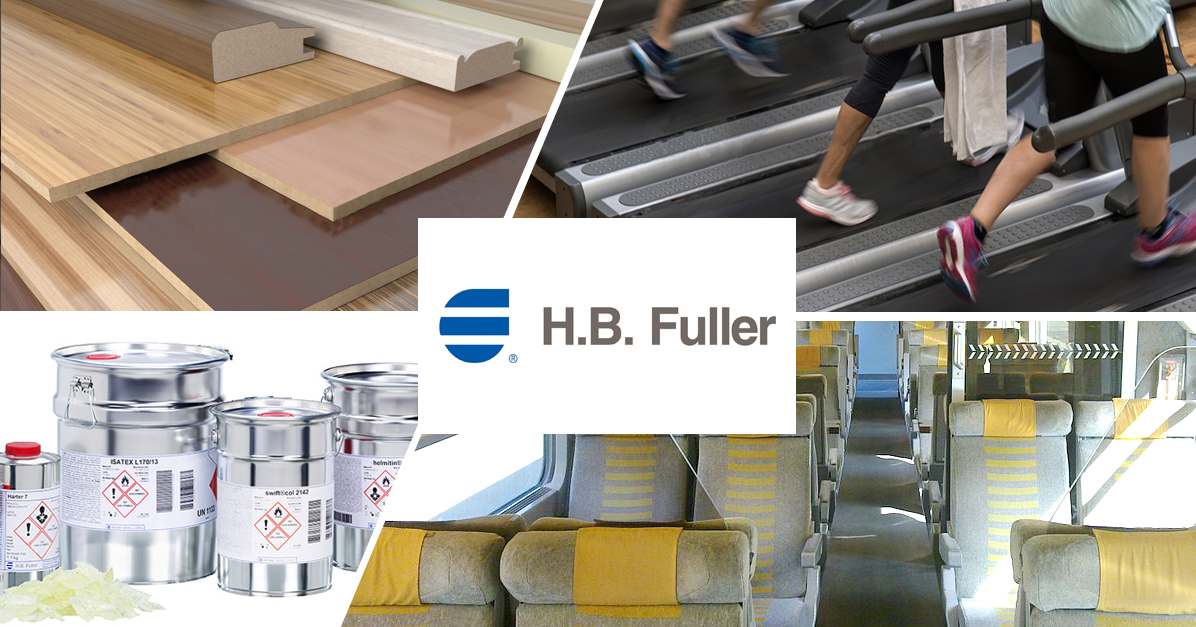How to bond large surfaces? Focus on contact adhesives

Focus on contact adhesives
Contact adhesives are a particularly effective type of product for bonding large areas. Thanks to their great versatility, they are commonly used for assembling wood (chipboard for example), flexible or rigid plastic foams, metals, elastomeric rubbers, leather, textiles …
Thanks to their high flexibility, these adhesives are suitable flexible or semi-structural bonding, suitable for both smooth and porous surfaces. The high initial green strength allows quick assembly of the substrates. These adhesives are formulated with a synthetic rubber (for example nitrile rubber, or polychloroprene in the case of neoprene adhesives) dissolved in a solvent (either a mixture of organic solvents, or in water in the case of aqueous adhesives).
Process
Contact adhesives must be applied in a thin layer on the two substrates that have to be bonded (they must be applied on both sides intended to come into contact). The application process is simple, but must be followed carefully, in order to obtain a non-durable assembly
1) Apply the contact adhesive on the two faces to be assembled, uniformly, in a thin layer (using a brush, a roller or a spatula for example, or by spraying with a gun in the case of fluid adhesives)
2) Leave the glued surfaces in open air while the solvent evaporates (see technical data sheet for the time – usually 10 or 15 minutes). In the case of solvent-based adhesives, the film of glue then thickens and becomes more sticky (the glue no longer transfers to the finger when you touch it). In the case of aqueous adhesives, assembly can be carried out when the adhesive is not milky anymore (visual check).
3) Assemble the two parts. Please note: gluing is immediate and post-assembly corrections are not possible
4) Firmly press the two pieces against each other, over the entire surface of the bonded area. The pressure should be as uniform as possible (using a roller for example). The strength of the bond depends primarily on the intensity of the force applied.
Some references of contact adhesives:
SwiftCol 4020 and SwiftCol 4027
These two products are very versatile solvent-based contact adhesives. They are used in several kind of applications : bonding foams, textiles, rubber or wood for example. Due to their low viscosity, they can be applied with a brush,or sprayed with a pneumatical gun. They exhibit good spray coverage and high green strength. Moreover, they have a significantly lower smell than most other solvent-based contact adhesives on the market.
SwiftCol 4020 is yellow (the characteristic color of solvent-based adhesives), while SwiftCol 4027 contains a red dye which allows better visual control of the glued parts. .
SwiftCol 9044 Red TF is a red solvent-based, low viscosity, neoprene glue for spray application. Often used for bonding PVC films, rubber or foams (for example for the manufacture of sports mats), it also has better resistance to high temperatures than standard contact adhesives (resistance up to 100 ° C continuously).
SwiftTak 2050 is a water-based contact adhesive. Without organic solvents, it is more environmentally friendly, and presents less EHS risk to the health and safety of operators. It is approved for aviation applications, and is commonly used for bonding PVC tiles, foams, fabrics, rubbers, etc.
Plus d’info :
Need more information about contact adhesives or our partner H.B. Fuller?
Contact our technical department at +33 426 680 680 or fill in our contact form.